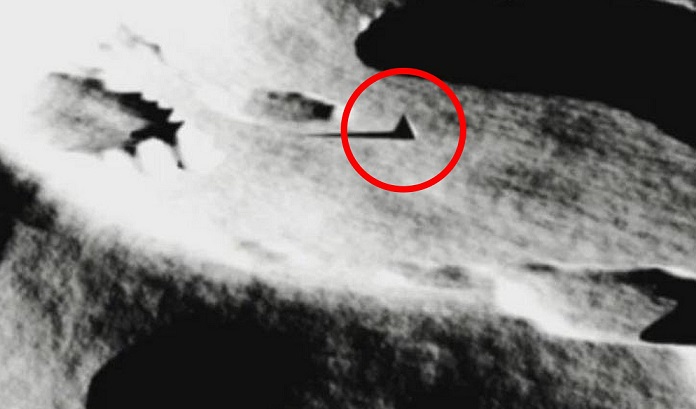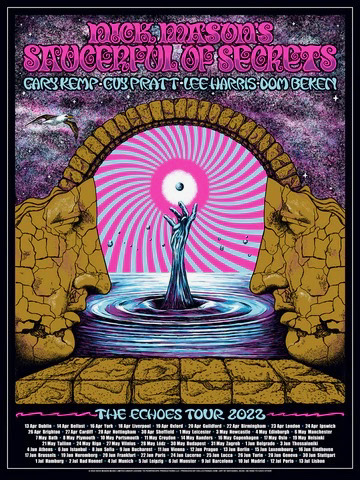

Pink Floyd's The Dark Side Of The Moon - official 50th anniversary book: more detailsīack in October, we told you about the official hardback book being published in March 2023 as part of the 50th anniversary of the release of The Dark Side Of The Moon by Pink Floyd. Home Latest News Pink Floyd's The Dark Side Of The Moon - official 50th anniversary book: more details We're Still Learning from the Apollo Moon Landings, But What If We Went Back?įollow Passant Rabie on Twitter.Apollo 11 at 50: A Complete Guide to the Historic Moon Mission.How NASA's Apollo Astronauts Went to the Moon.There's no substitute to having boots on the ground." "We have so much to learn still about the moon, which then not only tells us about other planets in the solar system but about the Earth itself," he said. "Our current plan is to hit the moon so we can move on and hit Mars." "As a lunar scientist, I'm very excited about the science we can do on the moon," Noble said.

#Dark side of the moon secrets how to#
"The moon can help us understand how to live and operate on another body, say, for example, if we go to Mars," she said.Īmid an ongoing debate over whether we should return to the moon, lunar scientists reaffirm that it is absolutely necessary we do it for the sake of future space exploration and to learn more about our own planet.

Hayne suggests that scientists need to revise their models of the moon's volcanic activity as most of them think that it stopped being active a long time ago, which may not be true - some scientists believe that the moon is still tectonically active.Ĭollecting as much information as we can from the moon will also eventually lead to a better understanding of other planetary objects in our solar system that we want to explore in the future. The cracks on the surface caused by this process would have allowed for the lava to flow through them. Recent research has pointed out that moon rocks are rich in radioactive material like uranium, and a 2014 paper (opens in new tab)in Nature suggested that heat-producing elements like uranium, thorium and potassium are causing the lunar surface to expand and contract as it gets hotter and cooler. He added that besides not knowing when these volcanic eruptions stopped occurring, we also don't know what caused them in the first place - whether they were triggered by a giant impact to the moon or if the moon is radioactive. "There's still some questions about how active the moon is today - that's kind of a hot area," Hayne said. Scientists know that volcanic eruptions took place on the lunar surface, but they are still unsure about the timeline over which these eruptions occurred and when the moon stopped being volcanically active. (Scientists believe that the moon itself is 4.51 billion years old.) Samples of basaltic rocks, or solidified molten lava, brought back by the Apollo missions were mostly old, but some were found to be as young as a billion years old, according to Noble. In order to detect the ice on the lunar surface, Hayne said that there are new tools such as infrared instruments to detect the chemical fingerprint of ice, thermal cameras and other heat-sending tools. "We'd like to know how much and where, and collect new data to investigate this." "The one that I'm very interested in is the question of ice and the poles," Hayne said. A 2018 study confirmed that there was frozen stuff on the ground in the moon's north and south poles. Hayne added that the instruments have become so miniaturized that they now easily fit into spacecraft.Īside from water, recent evidence also suggested that there is ice on the moon. "From my perspective, we have all kinds of instruments that didn't exist before," Paul Hayne, assistant professor at the Department of Astrophysical and Planetary Sciences at the University of Colorado, told.
#Dark side of the moon secrets crack#
We may not understand the water cycle yet, but we do have the tools to crack it now. "We now understand that there's a water cycle, but we don't understand how it works." "For 40 years, we thought the samples were completely dry," Noble said. Having water on the moon is crucial for future space exploration, as it could be used for drinking water and rocket fuel. The 2009 discovery opened up a whole new area of lunar research because it suggested that water could have existed on the moon since its formation. Nearly 40 years after returning from the moon, water was found inside rock samples brought back by the Apollo 15 mission.


 0 kommentar(er)
0 kommentar(er)
